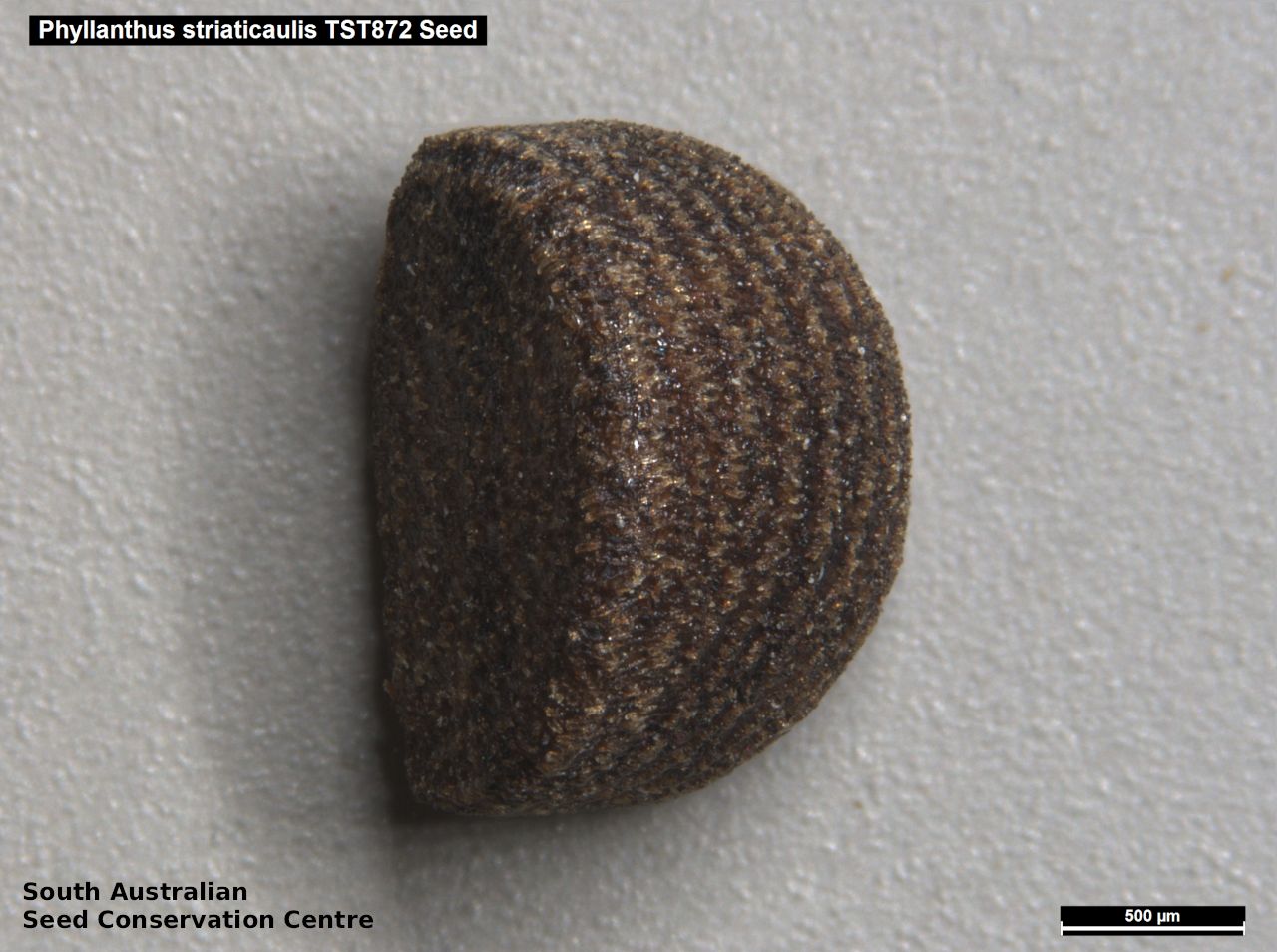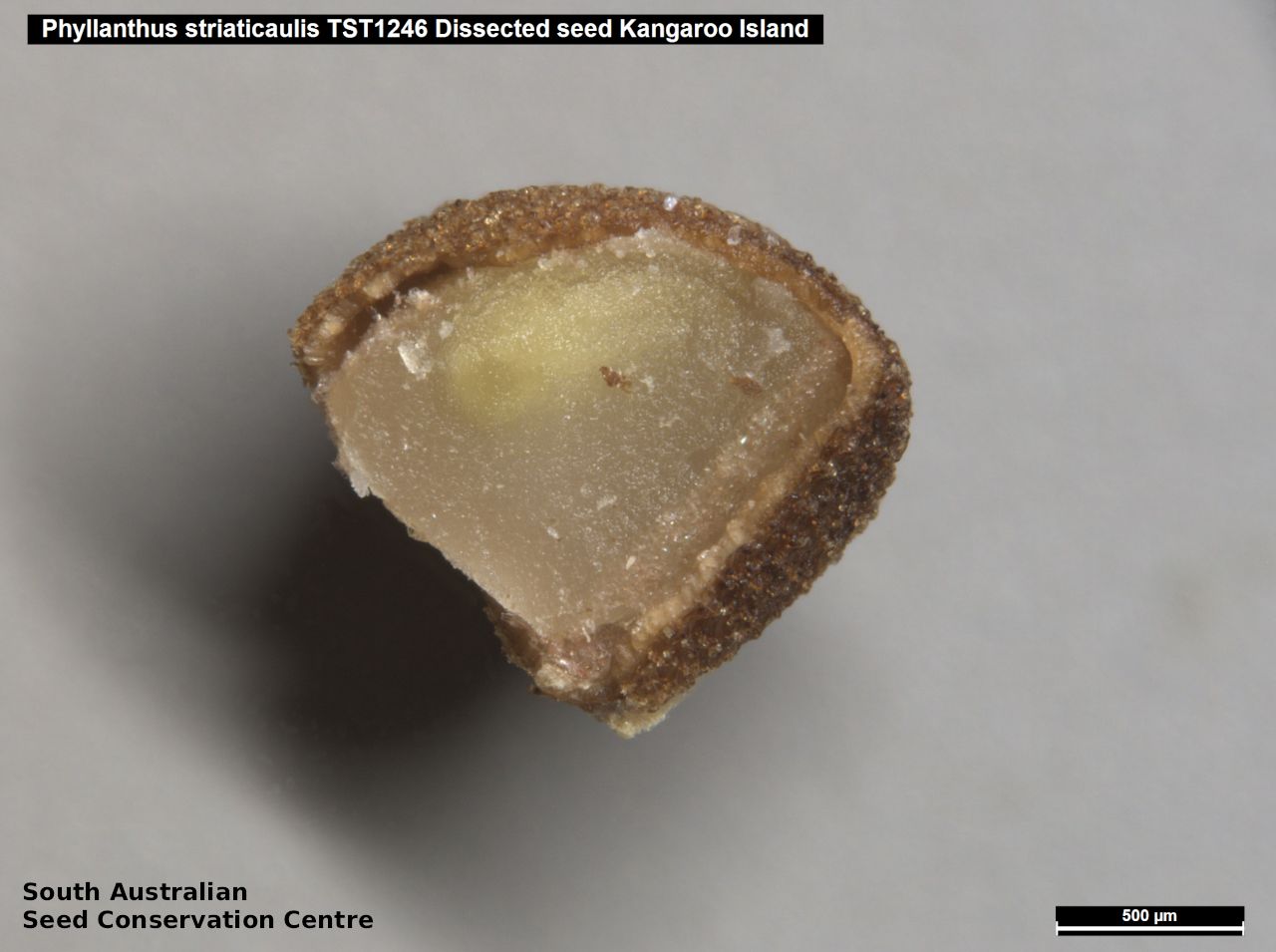


















Prior names
Phyllanthus australis, partly
Common names
Pointed Spurge
Southern Spurge
Etymology
Phyllanthus from the Greek 'phyllon' meaning a leaf and 'anthos' meaning a flower; referring to some foreign species where the flowers grow on the edges of dilated leaf-like branchlets. Striaticaulis from Latin meaning striatred stem; referring to the noticeable ribbing on the branchlets.
Distribution and status
Endemic to South Australia and found on Kangaroo Island, Fleurieu Peninsula and Yorke Peninsula, growing in dry sclerophyll forest, grassy woodland and in coastal heaths. Native. Rare in South Australia.
Herbarium regions: Yorke Peninsula, Southern Lofty, Kangaroo Island, Green Adelaide
NRM regions: Adelaide and Mount Lofty Ranges, Kangaroo Island, Northern and Yorke
AVH map: SA distribution map (external link)
Plant description
Dioecious shrub to 60 cm tall with prominently ribbed, glabrous to hairy stems. Leaves alternate, in opposite pair, concave, elliptical, lanceolate, obovate to oblanceolate, to 12.5 mm long and 4.2 mm wide, light-green to mid-green, glabrous or hairy. Male inflorescence in axillary clusters with 1-4 white or green flowers. Female inflorescence in axillary clusters with 1-2 yellow-green flowers. Flowering between June and February. Fruits are green depressed-globular capsule to 2.4 mm long and 3.8 mm wide, lobed. Seeds are brown sectoroid seed to 2 mm long and 1.5 mm wide, with deep striation and fine tuberculate surface texture. Seed embryo type is spatulate fully developed.
Seed collection and propagation
Collect seeds between July and February. Collect individually or break off short fruiting stems with fat capsules with hard dark seed. Green capsules can be collected if the seeds are dark and hard. Place the capsules in a tray and leave to dry for one to two weeks. Then gently rub the capsules with a rubber bung to dislodge the seeds. Use a sieves to separate the unwanted material. Store the seeds with a desiccant such as dried silica beads or dry rice, in an air tight container in a cool and dry place.
| Location | No. of seeds (weight grams) | Number of plants | Date collected | Collection number Collection location | Date stored | % Viability | Storage temperature |
|---|---|---|---|---|---|---|---|
| MSB | 1,100 (1.81 g) | 10 | 11-Nov-2009 | TST872 Yorke Peninsula | 100% |
Number of plants: This is the number of plants from which the seeds were collected.
Collection location: The Herbarium of South Australia's region name.
% Viability: Percentage of filled healthy seeds determined by a cut test or x-ray.